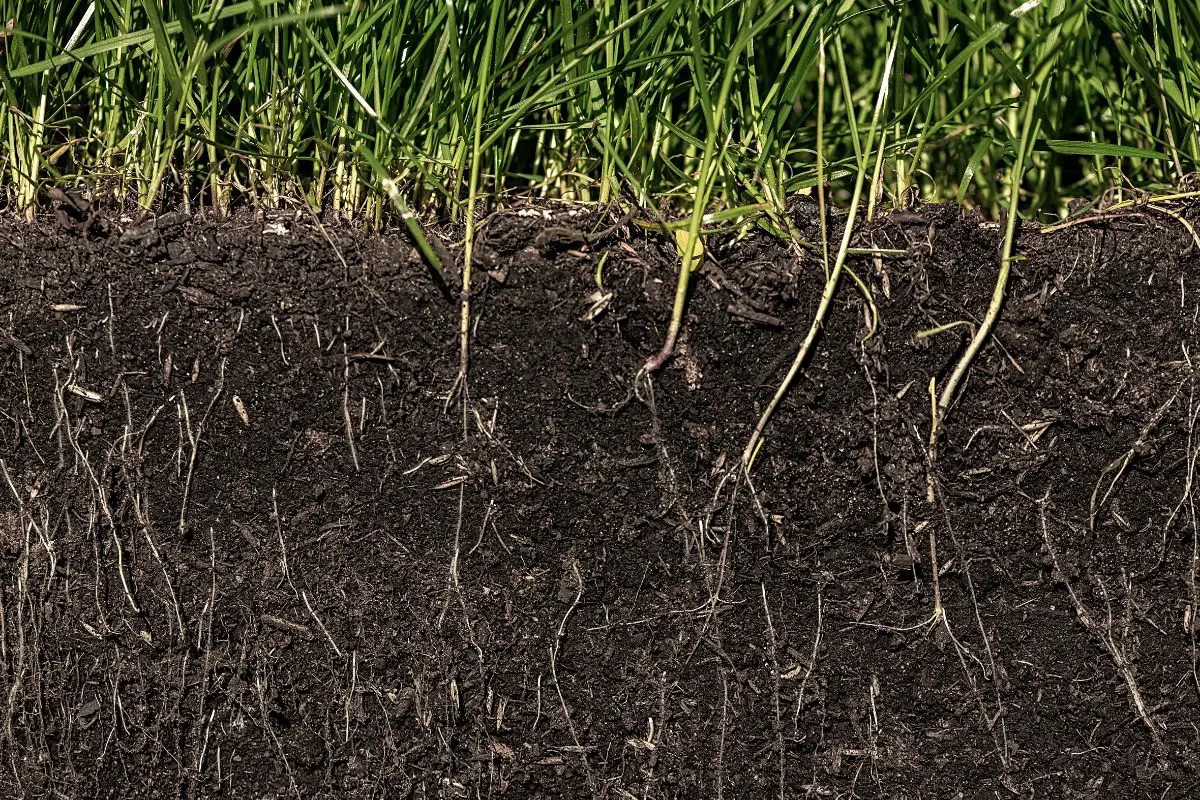Did you know that hard dirt can be a challenging surface to plant grass seed on? Many struggle with this common issue, but fret not - there are effective ways to tackle this problem and achieve a lush green lawn. In this post, we will delve into the step-by-step process of planting grass seed on hard dirt with topsoil, ensuring your efforts yield successful results in your yard. From preparing the soil to choosing the right grass seed and providing proper care, we've got you covered with practical tips and tricks. Say goodbye to barren patches and hello to a thriving lawn by following our expert advice on transforming hard dirt into a flourishing grassy oasis.
Key Takeaways
- Understanding Hard Dirt:
- Hard dirt can hinder grass seed growth, necessitating specific steps for successful planting.
- Soil Testing Importance:
- Conduct soil tests to determine nutrient levels and pH, ensuring the right conditions for grass seed germination.
- Preparing Planting Area:
- Properly prepare the planting area by loosening the hard dirt and removing debris to create an optimal environment for grass seed growth.
- Choosing Grass Seeds:
- Select grass seeds suitable for your region and soil type to enhance the chances of successful germination.
- Seeding Techniques:
- Use proper seeding techniques like overseeding or slit-seeding to improve seed-to-soil contact and maximize germination rates.
- Ongoing Maintenance Tips:
- Regularly water, fertilize, and mow the grass to promote healthy growth and ensure a lush lawn.
Understanding Hard Dirt
Soil Compaction
Identify compacted areas easily by performing a simple screwdriver test in the soil. If the screwdriver struggles to penetrate the ground, it indicates soil compaction. To combat this issue, utilize aeration tools to break up the compacted soil effectively. Ensure proper drainage systems are in place to prevent future soil compaction issues.
Clay Challenges
Planting grass seed in clay soil poses unique challenges due to its dense nature. Amend clay soil by incorporating organic matter like compost or peat moss to improve drainage and enhance soil structure. Select grass seed varieties that thrive in clay soil conditions for optimal growth and sustainability.
Moisture Testing
Conduct a quick and easy moisture test using the squeeze test method on the hard dirt. Adjust your watering schedule based on the moisture testing results to maintain optimal moisture levels for successful grass seed germination. It is crucial to ensure that the soil moisture remains at an ideal level throughout the planting process.
Identifying Causes
Pinpoint potential reasons for poor grass growth on hard dirt surfaces by assessing various factors. Address underlying issues such as inadequate drainage or compacted soil that hinder grass seed development. Determine if insufficient sunlight exposure contributes to the lack of healthy grass growth on hard dirt areas.
Soil Testing Importance
Conducting Tests
Conduct soil pH testing to assess acidity levels accurately. Test soil texture for drainage capabilities. Perform a germination test to check seed viability.
pH Adjustments
Adjust soil pH levels using lime or sulfur based on test results. Choose grass seed varieties suitable for the specific pH range. Monitor pH levels regularly for optimal conditions.
Adding Organic Matter
Incorporate compost or peat moss to improve soil structure effectively. Enhance soil fertility by adding organic matter. Mix organic matter thoroughly into the topsoil for even distribution.
Preparing Planting Area
Clearing Area
To prepare the planting area, start by removing debris, rocks, and weeds to ensure a clean surface. Get rid of any obstacles that could hinder grass seed growth. Creating a smooth surface is crucial for successful planting.
Watering Ground
Water the ground evenly to distribute moisture uniformly for optimal seed germination. Utilize a sprinkler system to maintain consistent watering patterns. Avoid overwatering as it can lead to waterlogging issues.
Breaking Surface
Break the hard dirt surface using a rake or tiller to loosen the top layer of soil. This step facilitates seed germination by creating an ideal environment. Establish a fine, crumbly texture in the seedbed for optimal seed-to-soil contact.
Choosing Grass Seeds
Grass Types
When planting grass seed on hard dirt, choose grass types that thrive in challenging conditions. Consider factors like drought tolerance and resistance to heavy foot traffic. Select from warm-season or cool-season grasses based on the local climate.
Season Varieties
For optimal growth, select grass seed varieties suitable for the planting season. Opt for cool-season grasses when planting in spring or fall. Choose warm-season grasses if you are planting during the summer.
Optimal Timing
To ensure successful germination, plant grass seed during the ideal growing season. Take into account local climate conditions to determine the best timing for planting. Aim to sow grass seed when soil temperatures are favorable for germination.
Soil Amendment Steps
Aeration Techniques
Core aeration alleviates soil compaction by removing small plugs of soil, allowing air, water, and nutrients to penetrate. This technique promotes healthier grass growth. Spike aeration, on the other hand, involves puncturing the soil with spikes to enhance surface-level aeration.
Before planting grass seed, it is crucial to aerate the soil. This process enhances root development by creating pathways for roots to grow deeply into the ground. By improving soil aeration, you provide an optimal environment for grass seed germination and growth.
Surface Crust Breakup
Breaking up the surface crust is essential for promoting seedling emergence. Gently scratching the soil surface with a rake or garden fork helps young roots penetrate easily. To prevent surface crusting, consider mulching the area or lightly watering it to maintain moisture levels.
By breaking up the surface crust, you create favorable conditions for grass seedlings to establish themselves. This simple step can significantly impact the success of your lawn establishment efforts.
pH Level Amendments
Adjusting soil pH levels is critical in creating an ideal growing environment for grass seed. Different types of grasses thrive in specific pH ranges; therefore, it's essential to tailor the pH levels accordingly. Using amendments like lime or sulfur can help correct imbalances and create a more suitable environment for your chosen grass seed.
Regularly monitoring and adjusting pH levels as needed ensures that your grass seed receives the necessary nutrients from the soil. Maintaining optimal pH levels contributes to robust root development and overall plant health.
Organic Matter Benefits
Adding Layer
- Apply a thin layer of topsoil to enhance seed-to-soil contact for optimal germination.
- Cover the grass seed with a light layer of mulch to protect it from harsh weather conditions.
- Make sure the added layer is not too thick, preventing the seeds from receiving adequate sunlight.
Improving Quality
- Enhance soil quality by introducing essential nutrients through fertilization to support seed growth.
- Improve soil structure by incorporating amendments like perlite or vermiculite for better water retention.
- Maintain soil health by regularly aerating the soil and adding organic matter such as compost.
Seeding Techniques
Spreading Seeds
Spread grass seed evenly across the hard dirt using a broadcast spreader for optimal coverage. Overlapping seeding passes helps prevent bare spots and ensures uniform growth. Adjust the seeding rates based on the specific grass type being planted and the desired coverage area.
When spreading seeds, make sure to cover the entire area systematically, ensuring no patches are left untouched. Properly spreading the seeds will result in a lush and healthy lawn that flourishes over time. By following these steps diligently, you can establish a strong foundation for your grass to thrive.
Straw Covering
Covering newly seeded areas with a thin layer of straw provides essential protection against external elements. This straw covering not only prevents erosion but also helps retain moisture crucial for seed germination. Utilizing straw mulch serves as a protective barrier, regulating soil temperature and creating an ideal environment for seed growth.
To enhance the effectiveness of straw covering, ensure that it is applied evenly across the seeded area. The straw acts as a shield, safeguarding the seeds from harsh weather conditions and facilitating their growth process. By incorporating this simple yet crucial step into your seeding technique, you set the stage for successful grass cultivation.
Watering Best Practices
Ensuring Techniques
To ensure successful germination, proper seed depth is crucial. Plant grass seeds at the recommended depth to facilitate growth. Implement appropriate watering techniques to prevent seed washout and promote healthy root development. Monitor seedling growth closely and adjust care techniques based on their progress.
Maintaining Moisture
Consistent soil moisture levels are vital for seed germination. Keep the soil moist but not waterlogged to support healthy growth. Water newly seeded areas frequently with light watering sessions to avoid drowning the seeds. Consider using mulch as a protective layer to retain soil moisture, suppress weed growth, and shield seedlings from harsh weather conditions.
Ongoing Maintenance Tips
Fertilizing Tips
To ensure healthy seedling growth, apply a starter fertilizer after planting grass seeds on hard dirt. Utilize a slow-release fertilizer for sustained nutrient availability over time. Follow the recommended fertilization rates carefully to prevent over-fertilization.
Protecting New Grass
Shield new grass from foot traffic until it establishes strong roots in the hard dirt. It's crucial to keep pets and wildlife away from newly seeded areas to prevent any damage. Regularly monitor for pests and diseases, taking swift action if necessary.
Summary
You now have a solid understanding of how to plant grass seed on hard dirt. By testing your soil, preparing the planting area, choosing the right seeds, amending the soil, and following proper seeding and watering techniques, you are well-equipped to tackle this project. Remember the benefits of adding organic matter and the importance of ongoing maintenance to ensure your grass thrives in tough conditions.
Take action today by applying these steps to transform that hard dirt patch into a lush green lawn. With the knowledge and tips you've gained, you can confidently take on the challenge of planting grass seed on hard dirt. Your efforts will be rewarded with a beautiful and healthy lawn for you to enjoy. Now go out there and get planting!
Frequently Asked Questions
How can I effectively plant grass seed on hard dirt?
To plant grass seed on hard dirt, start by loosening the soil using a rake or tiller. Conduct a soil test to determine its pH and nutrient levels. Amend the soil with organic matter, choose suitable grass seeds for your region, and follow proper seeding techniques for optimal growth.
Why is it important to test the soil before planting grass seed on hard dirt?
l testing is crucial as it helps you understand the pH level and nutrient composition of the soil. This information guides you in selecting the right grass seeds and amendments needed to improve soil quality. Testing ensures successful grass seed germination and healthy growth.
What are the benefits of amending hard dirt before planting grass seed?
Amending hard dirt with organic matter improves soil structure, enhances water retention, and promotes better nutrient absorption for grass seed growth. It also encourages beneficial microbial activity in the soil, creating a healthy environment for strong root development and overall plant health.
How do I choose the best grass seeds for planting on hard dirt?
Select grass seeds that are well-suited to your climate, sunlight conditions, and intended use of the lawn area. Consider factors like drought resistance, foot traffic tolerance, and maintenance requirements when choosing grass varieties. Opt for high-quality seeds from reputable suppliers for successful establishment on hard dirt.
What are some essential watering practices when planting grass seed on hard dirt?
After seeding, water the area lightly but frequently to keep the topsoil moist without causing runoff or puddling. Avoid overwatering, as it can lead to seed displacement or fungal issues. Gradually reduce watering frequency as the grass seedlings establish themselves, promoting deep root growth for long-term resilience.
Image Source: Paid image from CANVA



